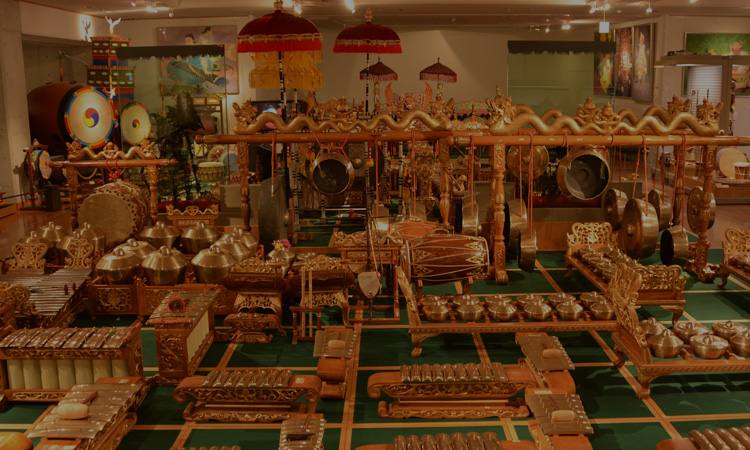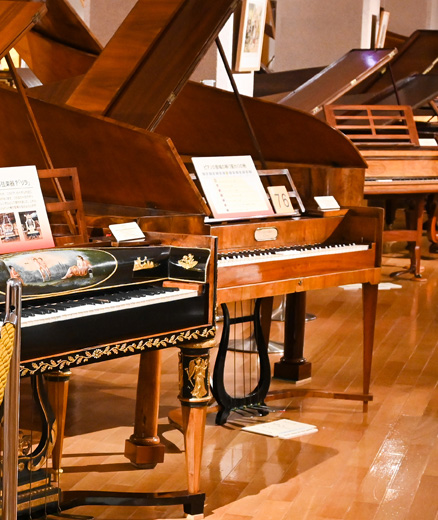

Exhibition & Concept
Permanent Exhibition
Instruments are displayed in categories; Asia, Africa, America, Oceania, Japan, Europe
and European keyboard instruments, Japanese-made European instruments
and Electric & Electronic Instruments.
Concept


The museum’s attitude
The Hamamatsu Museum of Musical Instruments is the first municipal museum of musical instruments in Japan. It was established as part of the Hamamatsu City “Creation of a City of Music” beginning in 1981, and is registered museum facility under the law of museums. The mission of the museum is to collect and preserve a representative selection of musical instruments and related materials from around the world, to research them, to exhibit them with an equal and unbiased perspective, and to cultivate a vast knowledge and understanding of music, musical instruments, and cultures through a variety of activities.
We hope the museum will become a center for all musical instruments and their cultures, and a place where people will meet together to discover this wonderful world.


Permanent Exhibition
The exhibition rooms are in the 1st floor and the basement. The 1st floor is for the musical instruments from Asia and Japan, early Japanese-made western ones, and for hands-on room, whereas the basement is for the instruments from Africa, Oceania, America, and Europe. 1,500 out of 3,300 collections of musical instruments are for permanent exhibition.
With the motto, “See, hear, and touch,” the permanent exhibition rooms exhibit by 5 continents of Asia, Africa, Oceania, Europe, and America, whereas Japan instruments and Japanese-made western ones are exhibited separately. You can enjoy playing the musical instruments and the sound instruments in the hands-on room.


The classification and the way of presentation
The exhibition for Europe is classified by Sachs=Hornbostel classification method that classifies musical instruments by the principle of sound production. The classification goes further by style, date, form, and usage. Since most musical instruments are displayed without cases, you can see the texture closely. Headphones and monitors are equipped so that you can enjoy 100 different sounds and 30 different videos. A personal earphone guide system gives you the explanation and sounds of 80 different instruments. Since the exhibition renewal in March 2006, our concept, “To exhibit the world musical instruments from unbiased and equal perspective,” has appeared more clearly.
How to classify musical instruments?
There are many methods of classification for the musical instruments. The most popular may be the one of wind instruments, string instruments, percussions, keyboard instruments, and electronic instruments. But this method is based on the different aspects; shape or vibrating parts or how-to-play. So the museum uses the Sachs=Hornbostel classification method based on sound producing system.


Sachs=Hornbostel classification
- aerophones, such as the pipe organ or oboe, which produce sound by vibrating columns of air.
- chordophones, such as the piano or string instruments, which produce sound by vibrating strings.
- idiophones, such as the xylophone or cymbals, which produce sound by vibrating themselves.
- membranophones, such as drums or tambourines, which produce sound by a vibrating membrane.
- electrophones, such as synthesizers, electronic instruments or theremins, which produce sound by electronic means.





